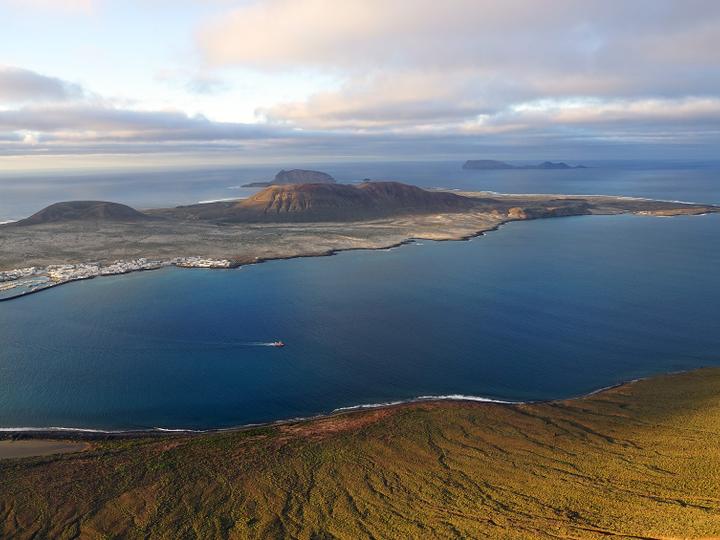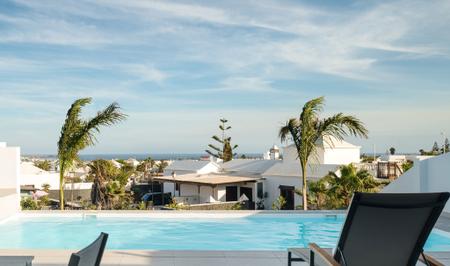Lanzarote
Montaña Roja is a very quiet residential area of Playa Blanca. The villas are located just 5 minutes away by car from the center, provided with all services such as commerce, leisure and hostelry.
The villas are located very close to the beaches of Playa Blanca and Playa Flamingo, and Timanfaya Natural Park.
Lanzarote from North to South
Content Blocks
Cueva de Los Verdes
Tunnel formed by the Corona Volcano, with six kilometers of galleries. Along its route there are at least sixteen Jameos.

Jameos del agua
César Manrique knew how to imagine and transform what was the collapse of the roof of a volcanic tube through which the lava flowed from the Corona Volcano, into a unique space in the world. White, blue, green and black, the colors that Manrique gave to his island, intermingle throughout his route.

Famara Beach
In the northwest of the island of Lanzarote, along more than five kilometers of golden sand, extends the known as Playa de Famara beach. It displays all its beauty at low tide, when the water forms a thin layer over the sand and reflects the sky and the cliff like a gigantic mirror. And if the tide coincides with the sunset, the visitor will have the chance to immortalize one of the most emblematic picture of the Canary Islands with the island of La Graciosa silhouetted in its horizon. Famara beach is a wild and sports beach for water sports such as surfing, bodyboarding, windsurfing and kitesurfing, thanks to its waves and constant winds.

Teguise
The town of Teguise was one of the first founded towns in the Canary Islands. Capital of Lanzarote until 1847, it preserves a notable set of buildings of great historical-artistic value. It has a Market on Sunday morning.

Timanfaya National Park
At the beginning of the 18th century, Lanzarote shook and from the depths of the island rivers of lava began to flow, in an impressive eruption that would last for years, destroying some of the most productive agricultural strips of the island and burying entire villages. Timanfaya was born.

Vulcano El Cuervo
It is a very special place that is part of the living history of Lanzarote. It is a very popular visit among the visitors as it is surprisingly easy to access the interior of the crater, making it a valid option for all audiences, both for those who just want to snoop, as for hiking lovers. It is advisable to wear comfortable walking shoes, as the ground is formed up of loose stones and it is uncomfortable to walk with beach footwear. Circle path. Duration 30-60 minutes.

La Geria
When the eruption of Timanfaya, threw these ashes between 1730 and 1736, it remained this lunar and desert appearance between the municipalities of Yaiza and San Bartolomé. But the human hand intervened to create this new landscape of the Geria Valley, where vineyards of Malvasia grape grow on layers of sand that retain moisture and are protected from the wind by circular stone walls. Some of its wineries, which must be visited, are Bodegas La Geria, El Grifo and Rubicón.

Punta Papagayo
In the south of the island of Lanzarote, in a virgin environment of extreme beauty and under the shelter of the Ajaches Natural Park, is located the wild beach of Papagayo. With views to the neighboring islands of Lobos and Fuerteventura, it stands out for its fine golden sand and the quality of its waters, so transparent that sometimes they take on an emerald color so intense that many Caribbean beaches would love it for themselves.

La Graciosa
The largest of the islands of the Chinijo archipelago is a redoubt of natural life without paved roads and with many paradisiacal beaches. We recommend you to do a jeep-safari. Ferry departure from Órzola.




